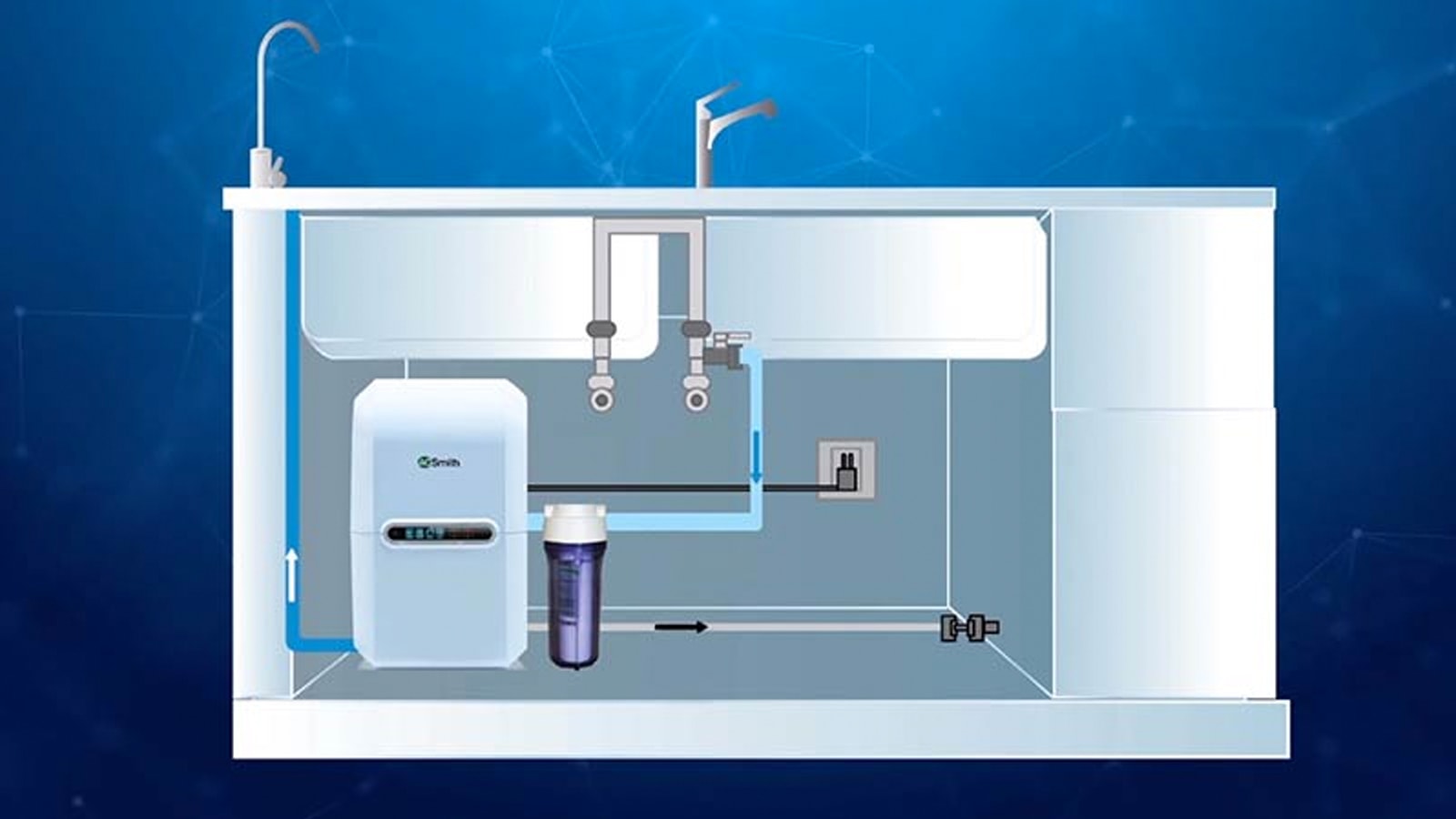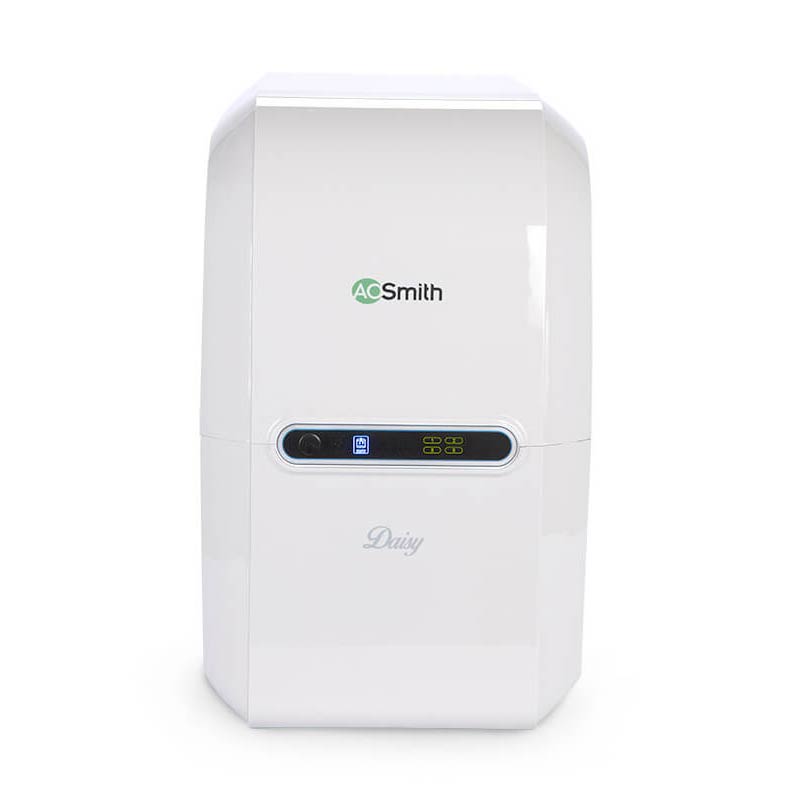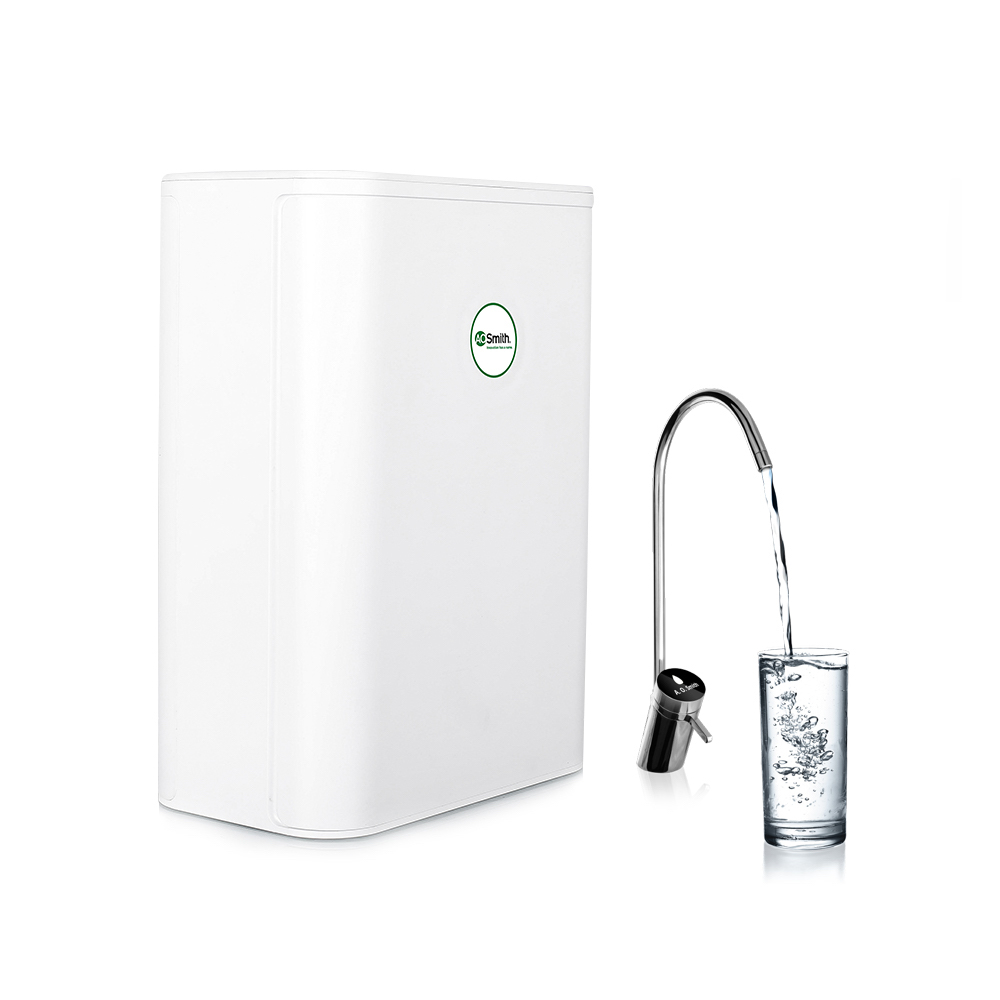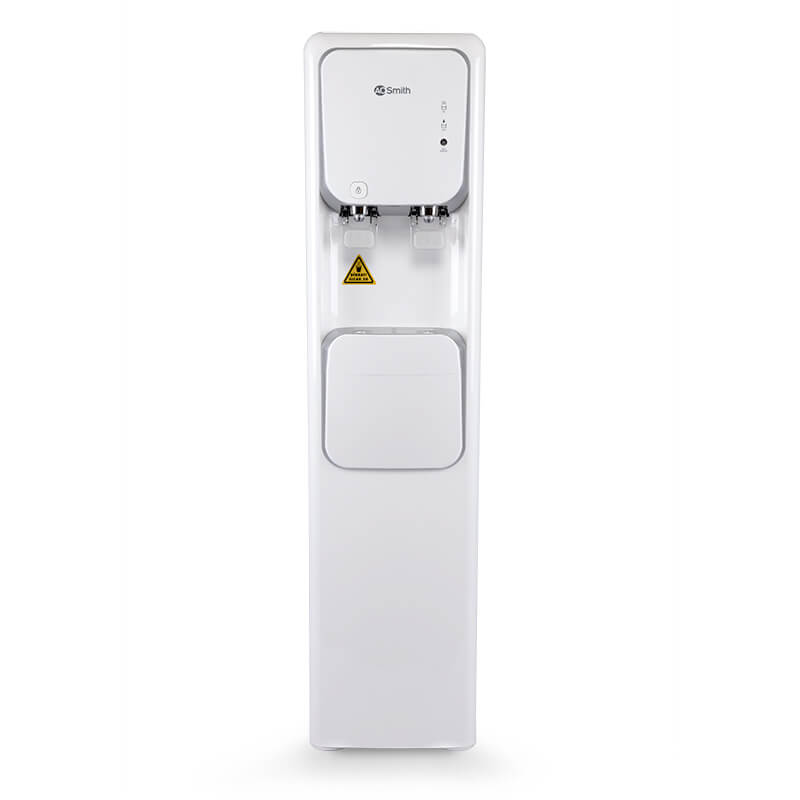Sosyal medyada en çok karşılaştığımız konulardan biri de “ters osmoz nedir” sorusu. Ters osmoz sistemleri nedir ve nerelerde kullanılır sorularını sizler için mümkün olduğunca anlaşılır bir dille yanıtlamaya çalıştık. En kolay anlatımıyla ‘osmoz’, suyun olduğundan daha yoğun bir ortama doğru hareketine denir. Örneğin, daha az bileşen içeren yağmur suyu, daha yoğun ve daha çok bileşenli tuzlu suya doğru hareket eder. Ters osmoz ise doğada gördüğümüz bu hareketin tamamen tersine çevrilmesi işlemidir. Ters Osmoz işlemi için suyun kaynağı fark etmez; isterseniz bahçe kuyusundan ya da belediyenin barajından gelen su kaynağı olsun. İçinde gözle görülmeyen halde bulunan tortu, klor ve çeşitli kirleticiler olan yoğun su, ters osmoz ile tüm bu istenmeyen bileşenlerden arıtılıp “daha temiz” ve “daha az yoğun” hale getirilir.
Bu yöntem ile değerlendirildiğinde, Ters Osmoz Su sistemleri, su arıtma alanında en sık kullanılan, en ileri teknoloji yöntemi olarak karşımıza çıkar. A. O.Smith olarak sizlere temiz ve sağlıklı içme suyu sunmak için kullandığımız bu teknoloji ile, Türkiye’de yürürlükte olan standartlara (TS 266 İnsani Tüketim Amaçlı Sular ) bağlı olarak su kaynağından alınan su, pek çok aşamalardan geçirilerek temizlenir. Filtrasyonda ilk üç aşamayı, bu işlemin öncü kuvvetleri gibi düşünebiliriz. Su bu filtrelerden geçerek, bu sistemin en anahtar noktası olan membrana gider. Son olarak da tat ve koku dengesi kazandırılır.
Su arıtma cihazlarımızda bulunan sitemler şu şekilde çalışır:
5 Micron Tortu Filtre; pas, kum, diğer büyük parçacıklar ve yabancı maddeleri süzer.
Granül Aktif Karbon (GAC) Filtre; klor, küf, dezenfeksiyon… vb. yan ürünleri, koku ve renklenmeye neden olan yabancı maddeleri absorbe eder.
1 Micron Tortu Filtre veya Kompozit Filtre; ilk iki aşamadan geçebilen daha küçük parçacıkları, suda asılı kalmış katı maddeleri, koloitleri arındırır.
Ters Ozmos (RO) Membran; Bakteri, virüs, ağır metal, böcek ilacı kalıntıları ile suda bulunan diğer zararlı maddelerin giderilmesinin gerçekleştiği “osmoz membranı” yarı geçirgen bir zardan ve pek çok katmandan oluşur.
Inline Karbon Filtre; suyun tadını ve kokusunu dengeler.
Ters Osmoz Sistemleri Neden Atık Su Verir?
Ters Osmoz sistemlerin atık verme nedeni, içerisindeki osmoz membranın çalışma sistemidir.
Basitçe ifade etmek gerekirse, osmoz membranı 40-50 adet özel dokudaki kağıdın, içinde kanallar olan ince bir borunun etrafında sarıldığı özel bir yapıya benzer. Bu kağıtların üzerinde mikroskobik gözenekler yer alır. Su, yüksek basınca itilerek iç borunun bir ucundan girer, tüm kağıt katmanlarından spiral bir yol izleyerek geçer ve borunun içindeki iki ayrı çıkış kanalına yönlendirilir.
Membran filtresi suyu temizlerken, suyu çıkışta ikiye ayırır. 1. kanala tamamen temizlenmiş su içilmek üzere gönderilir. 2. kanala ise giriş suyunun içinden aldığı tüm kirleticilerin olduğu belli bir miktar su gönderilir. Bu ikinci kanala gönderilen su, artık atık suyudur. Atık su vermeyen bir ters osmoz membran teknolojisi bulunmamaktadır. Sudan alınan sağlığa zararlı tüm kirleticilerin, ters osmoz cihazından çıkarılması ise çok önemlidir.
Ayrıca cihazın hangi oranda atık su verdiğine de dikkat etmek gerekir. Sıradan bir su arıtma sisteminde 1 bardak temiz su elde etmek için, 3-5 bardak arası atık su çıkmaktadır. A. O.Smith cihazlarında ise patentli membran teknolojisi ile 1 bardak temiz su elde etmek için, sadece 1 bardak atık su çıkar.
Kullanılan ileri teknoloji ve çevre dostu cihazlarımız, A. O.Smith’i sıradan cihazlardan ayıran en önemli özelliklerdendir. Filtrasyon ile Ters Osmoz sisteminin farkı da bu noktada ortaya çıkar. Atık su vermeyen sistemlere filtrasyon denir. Ancak filtrasyon ile sudaki ağır metal, virüs, bakteri gibi zararlı etmenler sudan ayrışmaz. Ters osmoz sistemlerinin sadece ilk üç aşaması olarak kullanılan filtrasyonda sadece tortu ve klor giderimi gerçekleşir; sağlımıza zararlı maddeler, filtrasyon sonrası içtiğimiz suda var olmaya devam eder.
Ters Osmoz Mineralleri Öldürür mü?
Çalışma prensibi olarak bir ters osmoz teknolojili su arıtma cihazının mineralleri zararlı ve yararlı diye ayırması maalesef günümüz teknolojisi ile mümkün değildir. Ters osmoz sisteminde amacımız sudan tüm zararlı etmenlerin atılmasıdır ve bu arada yararlı minerallerin de alınması söz konusu olur. Burada öncelikli amaç içtiğimiz suyun insan sağlığına zararlı minerallerden arınmasıdır. Çünkü zaten günlük ihtiyacımız olan minerallerin neredeyse tamamına yakınını besinlerden almaktayız. Bir kişinin günlük mineral ihtiyacını sıvılardan karşılaması için aynı anda 10 bardak süt, 1 şişe soda veya bir küvet su içmesi gerekir.
A. O.Smith su arıtma cihazlarındaki gibi iyi tasarlanmış bir ters osmoz su arıtma cihazı içme suyunda bulabilecek tüm zararlı bakteri ve virüsleri, ağır metalleri, tarım ve böcek ilacı kalıntılarını ve diğer tüm zararlı maddeleri etkin bir şekilde uzaklaştırır. Filtre değişim zamanlarını dikkate alarak kullanım yapıldığında en temiz suyu elde etmenizi sağlar.



